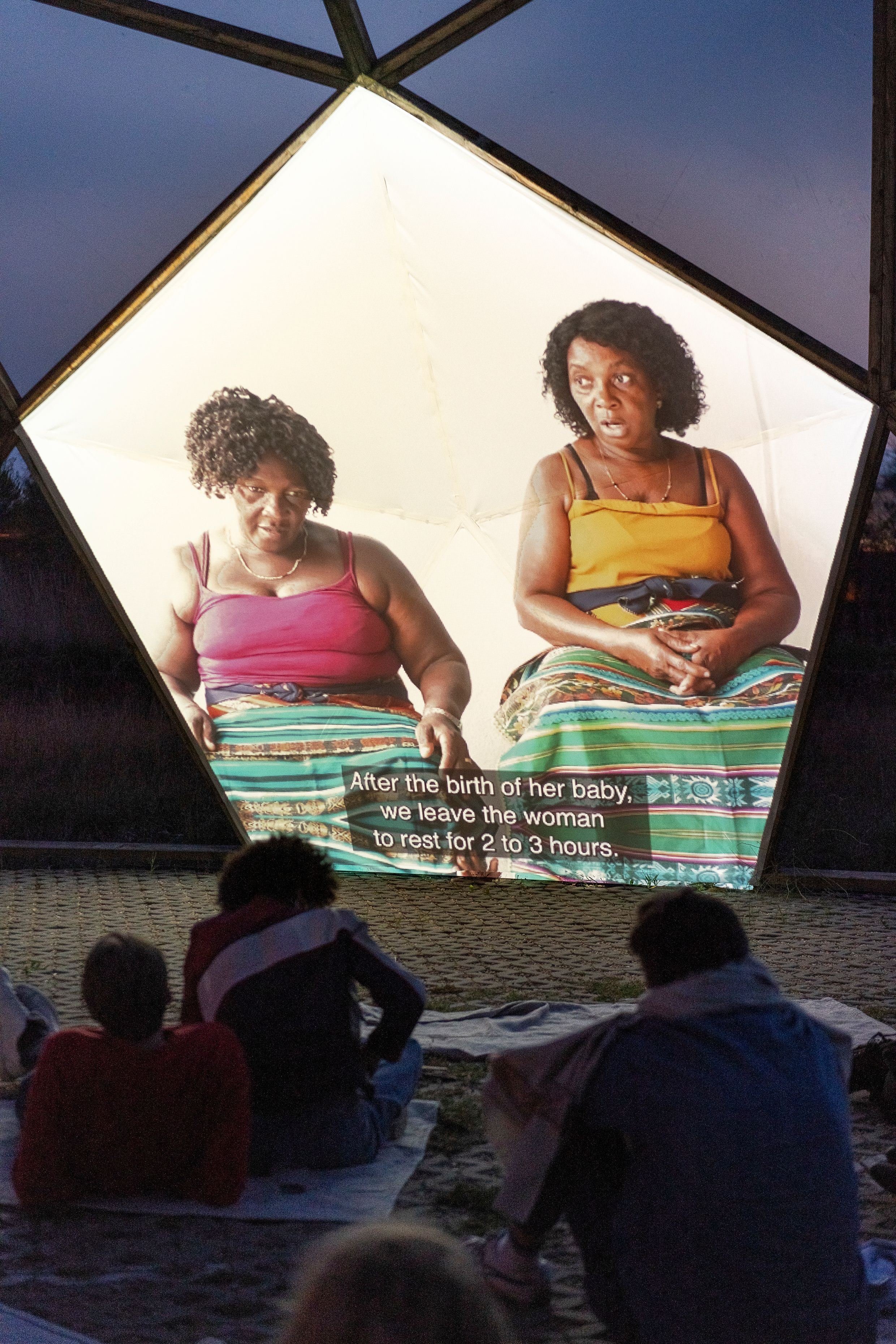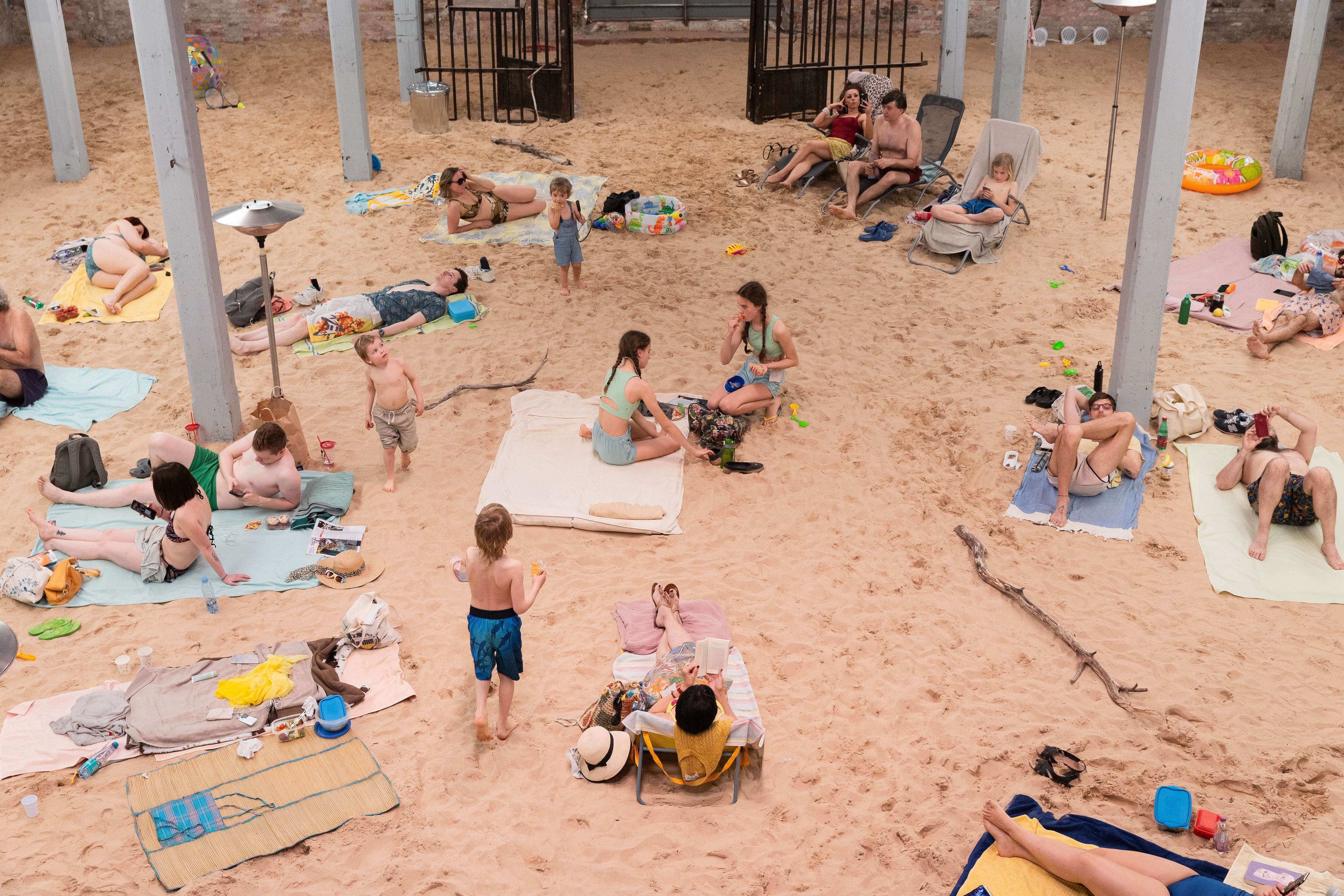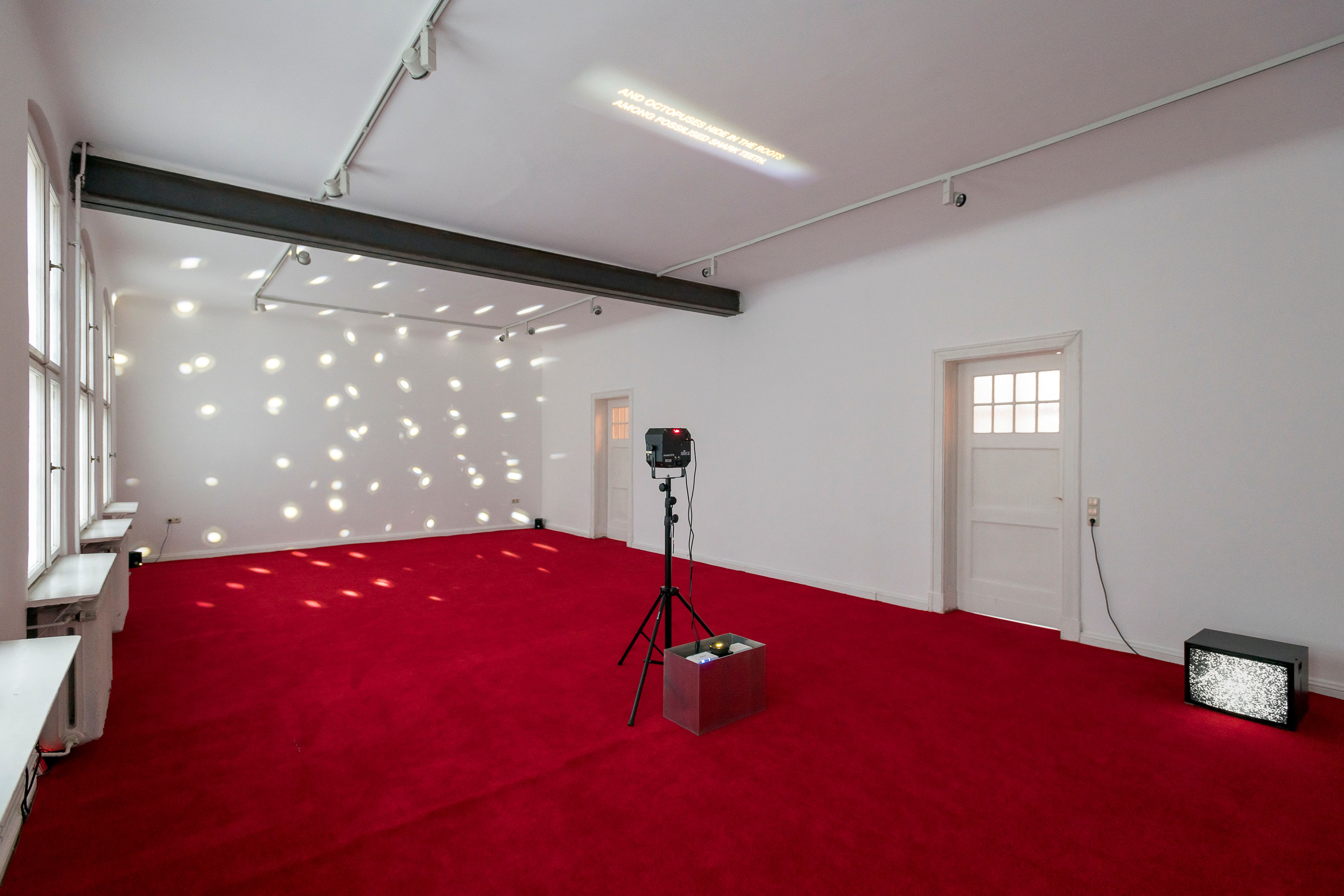It’s a good question. I have to admit to you that arriving at titles for me is an instinctive practice, which in the end always lands on rhythms and poetics. And so, on the most basic level, one day the title came to me and I just thought it sounded good. But there were definitely many circumstances that justified the title when it stuck. First of all, sort of bizarrely, coincidentally, a lot of the team at E-Werk Luckenwalde, including the director and the head of Power Nights and myself, were mothers of young children. It was similar to the way that Sun & Sea was created as a collaboration of many mothers with young children, that made Sun & Sea a piece that, even though not quite intentionally, was designed as a place where the kids could also be parked, or placed. In Venice, it had this double function of childcare and performance. I don’t think that it was an intention then, and it wasn’t an intention this time either, but it just so happened that E-Werk Luckenwalde is this space that both inside and outside lends itself really well to the care of children, as they’re able to explore it with some degree of independence. So that was the coincidence before the title ever came – before the exhibition came together. And by virtue of… that’s what you do when you have young kids, we ended up talking about mothering quite a lot. I was then putting together the proposal for the programming of the artists that would be involved, and because of my research I knew that there was going to be a strong connection to ecology and the environment. Though the angle I often take around ecology and the environment has an element of myth or some kind of... I wouldn’t say direct spirituality, but some kind of research interest in the spiritual and new animism. So all of that was coming together without holding hypotheses. And then I had a conversation with Cooking Sections, who I also invited to participate, and they told me about this work they were doing for Istanbul², which was a piece of research around fertilization, fertilizers, and fertility, and the connection between those things. Which, coincidentally again, was something that I was also reading about, since another event called PLANTSEX that had happened in 2019 in London. Their description of their project evoked so much for me that was already rumbling in my mind that it also somehow brought new meaning to the assemblage of artists and practices that I was already bringing together. Speaking with Daniel Fernández Pascual and Alon Schwabe of Cooking Sections and their project revealed the inner meaning behind the bringing together of the different artists and practices that became Being Mothers, in as much as so many of the projects had an element that in some way intersected with motherhood. It wasn’t really my conscious intention. For example, Revital Cohen and Tuur Van Balen’s project was sort of based on research on the strange behaviors of the octopus³. The octopus has a very poignant story of motherhood, where mother octopuses will defend the unhatched octopi babies until they hatch, and then as soon as they are born, she dies, as a result of not feeding herself and being attacked during this period. Or, if we think about Tabita Rezaire, who was opening a center for what she describes as “the arts and science of the body, the earth and the sky”, her entire political philosophy is really based on reviving practices that start from the principle of the womb. And she’s training to be a doula as well. The piece that she contributed was interviews with various doula practitioners in her travels. So, it sort of came together with the artworks. That’s generally my process. I find it almost impossible to create an idea in the blank and then put the artworks in. That makes no sense. I prefer to come up with an instinctive assemblage of people and things, and then try to step back as a member of the audience and see what meaning emerges from these things, and then describe. ¹ Sun & Sea is an opera-perfromance by Rugilė Barzdžiukaitė, Vaiva Grainytė and Lina Lapelytė, originally presented as The Lithuanian Pavilion during 58th International Art Exhibition – La Biennale di Venezia, where it won the Golden Lion for Best National Participation. Lucia Pietroiusti is the curator for the piece. ² 17th Istanbul Biennial, Cooking Sections: Wallowland (site-specific installation, 2022). ³ Revital Cohen & Tuur Van Balen, Three Hearts (Phthalo Blue & Titanium White Strobe), 2021.






